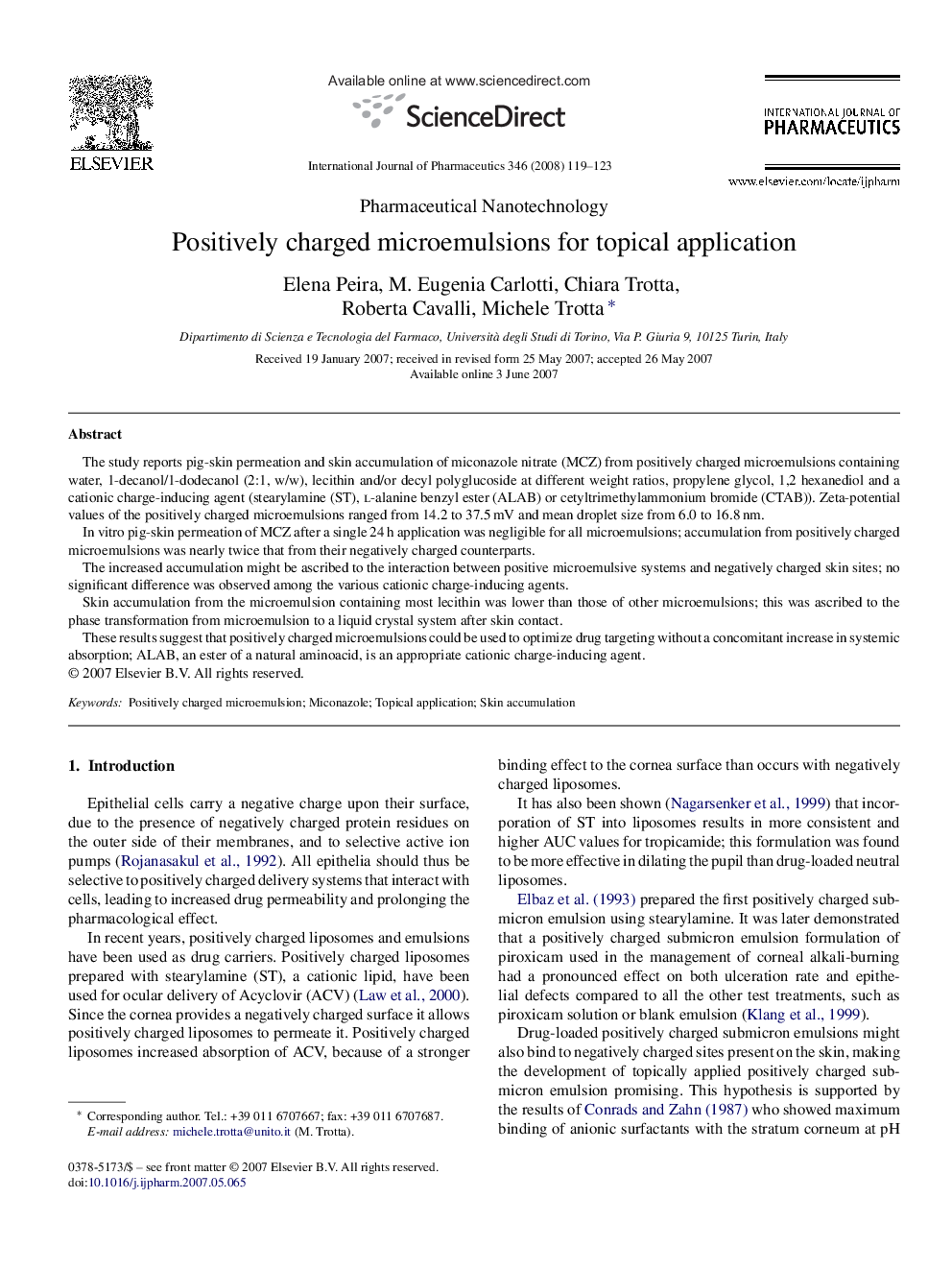| Article ID | Journal | Published Year | Pages | File Type |
|---|---|---|---|---|
| 2505984 | International Journal of Pharmaceutics | 2008 | 5 Pages |
The study reports pig-skin permeation and skin accumulation of miconazole nitrate (MCZ) from positively charged microemulsions containing water, 1-decanol/1-dodecanol (2:1, w/w), lecithin and/or decyl polyglucoside at different weight ratios, propylene glycol, 1,2 hexanediol and a cationic charge-inducing agent (stearylamine (ST), l-alanine benzyl ester (ALAB) or cetyltrimethylammonium bromide (CTAB)). Zeta-potential values of the positively charged microemulsions ranged from 14.2 to 37.5 mV and mean droplet size from 6.0 to 16.8 nm.In vitro pig-skin permeation of MCZ after a single 24 h application was negligible for all microemulsions; accumulation from positively charged microemulsions was nearly twice that from their negatively charged counterparts.The increased accumulation might be ascribed to the interaction between positive microemulsive systems and negatively charged skin sites; no significant difference was observed among the various cationic charge-inducing agents.Skin accumulation from the microemulsion containing most lecithin was lower than those of other microemulsions; this was ascribed to the phase transformation from microemulsion to a liquid crystal system after skin contact.These results suggest that positively charged microemulsions could be used to optimize drug targeting without a concomitant increase in systemic absorption; ALAB, an ester of a natural aminoacid, is an appropriate cationic charge-inducing agent.
